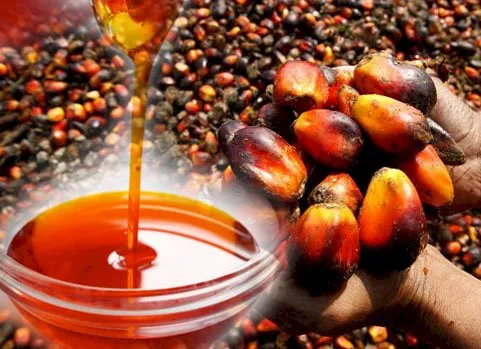Table of Contents
Conch (pronounced "konk") refers to several species of large marine snails that belong to the family Strombidae, with the queen conch (Lobatus gigas) being the most well-known. These sea creatures are instantly recognizable by their beautiful, spiral-shaped shells, often prized for their intricate patterns and stunning colors. Found in warm, shallow waters of tropical regions, especially in the Caribbean, conches play an important role in marine ecosystems by grazing on algae and maintaining the balance of their environment.
Culinary traditions in many coastal areas celebrate conch as a delicious and versatile seafood. From Bahamian conch salad to deep-fried fritters and hearty stews, conch meat is tender, slightly sweet, and packed with flavor. It is a beloved ingredient in island cuisines, where it is often prepared fresh and infused with local spices.
1. Overview
Conch refers to large sea snails of the family Strombidae, primarily the queen conch (Lobatus gigas), native to Caribbean waters. Renowned for its firm, sweet meat and striking shell, conch is a culinary staple in the Caribbean and a delicacy in global gourmet markets. This guide explores its biology, economic significance, and culinary versatility.
2. Global Varieties
- Queen Conch (Lobatus gigas)
- Size: Shell up to 12" long; meat ~1 lb.
- Habitat: Caribbean Sea, Gulf of Mexico.
- Dog Conch (Laevistrombus canarium)
- Size: Smaller, 3–5" shell.
- Habitat: Indo-Pacific regions (Vietnam, Malaysia).
- Fighting Conch (Strombus pugilis)
- Size: 3–4" shell.
- Note: Less commonly harvested for food.
3. Price Factors
- Wild-Caught: $15–$30/lb (fresh meat); $50–$100/lb (sushi-grade).
- Processed: Canned conch ~$10–$20/can.
- Factors: Size, region, sustainability certifications (e.g., MSC).
4. Physical Traits
- Colors: Shell: pink/orange exterior, glossy interior; Meat: ivory-white.
- Smell: Fresh ocean brine; spoiled conch smells ammonia-like.
- Flavor: Sweet, mildly briny, with a chewy texture akin to calamari.
5. Culinary Uses
- Raw: Sashimi (kobujime in Japan), ceviche (Caribbean).
- Grilled/Sautéed: Marinated in citrus and herbs (Bahamian grilled conch).
- Curries/Stir-Fries: Thai pad cha hoi (spicy stir-fry), Malaysian curries.
- Soups/Stews: Conch chowder (Bahamas), Vietnamese canh hến.
- Fried: Conch fritters (Caribbean), tempura (Japan).
- Popular Dishes:
- Conch Salad (Bahamas): Diced with lime, peppers, and onion.
- Conch Ceviche (Peru): Marinated in lime juice and cilantro.
6. Nutrition & Health Benefits
- Macronutrients: High protein (25g/100g), low fat (1g/100g).
- Vitamins/Minerals: B12, iron, magnesium, selenium.
- Health Benefits: Supports energy metabolism, immune function, and muscle health.
7. Cultivation & Capture
- Wild Harvest:
- Free-Diving: Hand-collected in shallow Caribbean waters.
- Trawling: Limited due to habitat damage.
- Aquaculture: Experimental farming in Turks and Caicos; challenges include slow growth rates.
8. Byproducts
- Shells: Jewelry, decorative items, and building materials.
- Pearls: Rare, non-nacreous "conch pearls" used in luxury jewelry.
- Operculum: "Conch horn" used in traditional instruments.
9. Processing & Storage
- Live Storage: Keep in seawater (1–2 days).
- Freezing: Blanch and vacuum-seal (6–12 months at -4°F).
- Canning: Cooked in brine or tomato sauce (common in the Bahamas).
10. Major Producers & Trade
- Top Producers: Bahamas, Turks and Caicos, Honduras.
- Exporters: Caribbean nations to USA, EU, and Asia.
- Importers: USA (Florida), Japan, Singapore, Hong Kong.
11. Climate Conditions
- Temperature: 70–85°F (21–29°C) in tropical/subtropical waters.
- Habitat: Seagrass beds and sandy substrates at depths of 10–100 ft.
12. Diseases & Risks
- Overfishing: Queen conch listed as "Endangered" in some regions.
- Parasites: Rare but possible in raw preparations (e.g., Anisakis).
- Habitat Loss: Coastal development and pollution.
13. Return on Investment (ROI)
- Farming Costs: High due to slow maturation (3–5 years; ~$50,000/acre).
- Profit Margins: 20–40% in luxury markets; ROI in 5+ years.
14. Sustainability & Conservation
- Regulations: Harvest bans in Florida and parts of the Caribbean.
- Certifications: MSC certification for sustainable fisheries.
15. Quick Recipes
- Bahamian Conch Fritters: Mix minced conch with flour, peppers, and deep-fry.
- Thai Spicy Conch Salad: Toss with chili, mint, and fish sauce.
- Japanese Conch Sashimi: Thinly sliced with soy sauce and wasabi.
16. Conclusion
Conch bridges cultural heritage and gourmet dining, but sustainable practices are critical to preserving wild populations. Innovations in aquaculture and strict regulations offer hope for its future.
Beyond their culinary appeal, conch shells have been used historically as tools, musical instruments (such as the iconic conch horn), and even in art and decoration. These fascinating mollusks symbolize the harmony and abundance of marine life.









